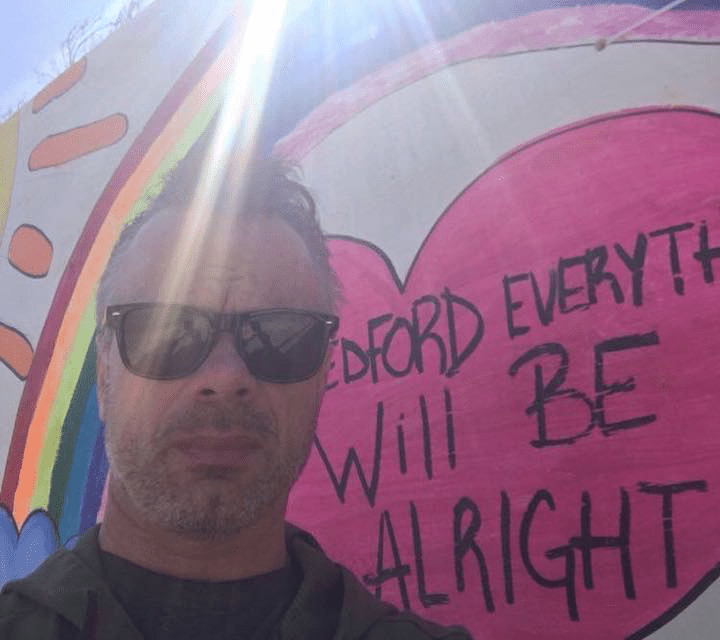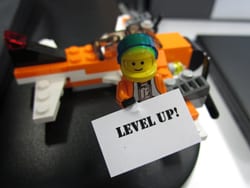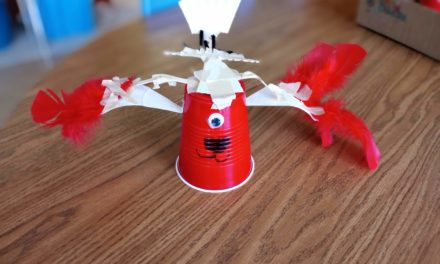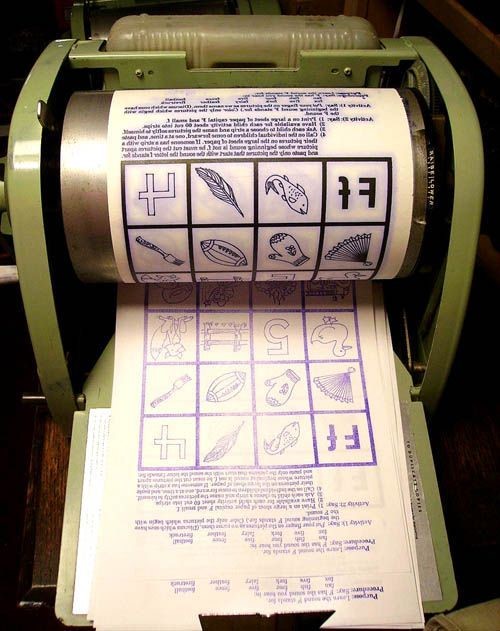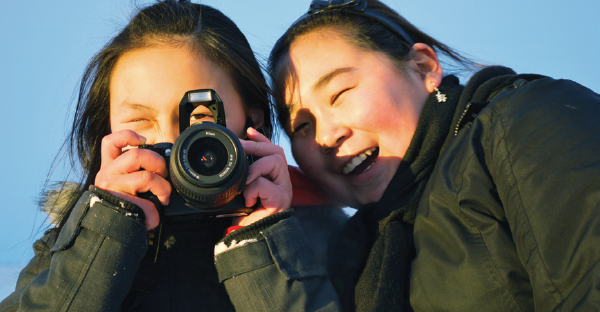On June 17th, I had a great conversation with Chris Morgan, the principal of Butler Elementary at the Eastern Townships School Board (ETSB). We talked about how principals have been dealing with health and safety issues surrounding the Covid-19 pandemic, as well as supporting his teachers with relevant professional development opportunities, and Butler’s successful reopening experience. ETSB is an off-island board, so its Elementary schools reopened their doors to students a few weeks ago. Chris shares some great reopening pointers and thoughts for educators as we embark on planning for a provincial reopening come September 2020.
Transcript
edited for readability
Chris Colley (CC): So, today we’re going to be talking with Chris Morgan. He’s a principal over at Eastern Township School Board who’s been a principal there for about the last 12 years. He’s the principal at Butler Elementary in Bedford, Quebec and he’s been there for 9 years. We thought it might be fun to touch base and see an administrative perspective of the shutdown, the reopening and all of that. So I wanna say welcome to Mr. Morgan. How are you doing?
Chris Morgan (CM): I’m doing well, thanks for having me.
CC: Oh it’s great. Thanks so much for taking some time to talk with me here today. So, we’re going to just kind of start off. I have a couple of questions just to set the scene a bit Chris. Tell us a little bit about your school like where it is, how many kids you have, teachers…Just a little kind of intro to your environment where you are, okay ?
CM: Well, the school is Butler Elementary and we’re located in Bedford, Quebec so it’s the townships. We normally have a population of a little over 160 kids. It’s an anglophone school obviously and the vast majority of the kids come from anglophone families although we have some kids that still have eligibility that are more francophone at home that do attend. It’s a school. It’s an and school so there’s quite a bit of poverty. I’m obviously very biased but it’s the most incredible little school, a lot of –
[bell rings]
CM: Excuse the bell. As you can tell, we’re open for business. A lot of community involvement, a lot of volunteers, it’s a country school.
CC: So, let’s go back a little bit Chris about when the shutdown first started. As of March 13th, schools were shut down, kids went home, teachers went home. How did you guys keep in touch with your kids and the teachers? How did you bring them together because I did see some posts on your Facebook…I love your Facebook page by the way. Of all these cool things that you guys were doing to bring your community together. Can you talk to that a bit?
CM: Sure. Well, we did a variety of things. Thanks to our super volunteer Faye Hamilton, we do have a great social media network including Facebook. But, we were up and running pretty quick in terms of what we were able to do. So, we put together a learning resource website so the kids could access their materials by grade level. But then we also did like personalized messages. We had the teachers take turns recording themselves reading a book. You know, just messages from the principal online. One really cool thing that we did is just to help out families both related to the school and the communities. We had what we called the ‘Butler pantry’ where families could come to a little pantry that we had set up in a garden shed and pick up some groceries and things for no cost. So, just trying to help out because obviously some of the work that the parents would normally have without the Covid.
CC: That’s amazing what you guys did. I saw some photos of that pantry. It’s pretty amazing what you guys did for the community itself. How key is that social media part of…How important was it to keep you guys in touch with everybody else?
CM: I think in terms of this situation in particular, it was really important. Normally, I would say that our social media is to get messages across to the population. So, we use it now as a communication tool but it’s also often just to advertise the really cool things that we’re doing. It transformed into something key that we were hoping the kids were going to be viewing because we wanted them….Listen, it was an anxious time, right? Nobody – even adults – we weren’t quite sure what was going on and what it was going to look like in a month or two or a year. So, we were trying to lower anxiety and get the kids, just to get the kids to know that we’re still thinking about them.
CC: I think that too, eh, even this online thing, they always say the most important thing is to make sure that you keep those relationships alive. And that the kids feel like even though you’re through a screen, you still feel that connection to the teacher, to the school, to the principals, etc. What were some…So, once the government had said, ‘okay, we’re going to slowly push you guys back’. How did ETSB respond to the reopening plans? What was kind of the process that you guys had to go through as the administrators?
CM: Well, we had several meetings obviously. Management meetings where we went through different protocols and – what we call the BG team, the buildings and grounds team – really came together in terms of making sure that we had the supplies and the structure needed to be as safe as we could. Like in terms of disinfecting and things like that. We were left to a certain extent – we were left to our own devices to tailor things to our own schools but they were certainly like a valuable resource and as I said, there were open discussions about what a typical school day could look like and suggestions as to how to handle things. Then the administrators also shared best practices.
CC: Right. Could you share a couple of those? What were some of the best practices that they had suggested?
CM: Well, things that came out of that and things that we implemented here at Butler’s…We created like these …um, it’s almost like one-room school houses within the big school. We created pods where the kids were to get together as a group but with a limited number of adults. You’d have two or three adults assigned to a group of kids and so the old idea of having the french teacher move from class to class or having kids move from one end of the building to another to attend a different physical classroom – all that changed. That’s a good example.
CC: When you guys started to come back, what were some of your big surprises or things that you hadn’t expected to happen and happened? Were there some things that once you reopened the school up that some some surprises came out of it or some happy coincidences?
CM: I think that the biggest thing like and it’s almost like a personal thing but I’m sure I’m not alone. I myself was – I was unsure of the decision to put it lightly and it wasn’t because I was necessarily worried about the virus. I realized that we were in a pretty good situation and statistically, if we were careful, I was confident that we would be okay. You can’t control everything but I still felt good about that. What stressed me out was what I anticipated would be anxiety amongst the kids. Especially because you’re going to see teachers in masks and you’re only going to be able to walk down the hallway in one particular direction and you’ve got an assigned bathroom and you can’t just go to that bathroom. All sorts of different little changes. There’s different personnel. We had some teachers that did not come back because pregnancies and other reasons. I was worried the kids would come back and this would be too much. The surprise was that I was wrong, essentially. It did not take long and the routines were learned and the kids were…The kids were anxious to get back. They were smiling and happy and it didn’t take long for the anxiety to go down amongst them and the staff. We created a new normal and it went better than my negative attitude expected.
CC: I guess a lot of it falls on your shoulders too, right? As the principal of the school, you have to be the last filter for everything, right?
CM: I do, yeah. I guess so. That’s true but I mean, none of this happens without like like – I’m not gonna blab on forever but I have an amazing group of people working with me so they make it a lot easier for sure.
CC: Let’s talk maybe a little bit about that. So, the kids come back did you still have other kids at home as well or were you working in a hybrid kind of situation where you had some online and some face-to-face?
CM: Yeah and we still do. We started off with about 30 percent of our population returning which I think is low in comparison to the francophone numbers but in terms of the anglo schools that it was a pretty high number and we’ve gone up since then. So we’re probably close to 40-45 percent now. So that means a large proportion of our kids are still at home. As I mentioned earlier, right off the bat we had created a website where kids and parents had access to individual lessons by grade. Then on top of that we had some online sessions. And on top of that, we distributed the ministry packages and the materials that they provided for us. So it was a bit of a mishmash but we’re still doing that for the kids that are online. We’ve got some teachers that are really tech-savvy and so, some of the kids are zooming in for different classes and sharing the class virtually at the same time as the kids that are physically there. So, it’s been a little bit of – and, we’re continuing to improve that. We’re working on that actually. We’re doing some LEARN workshops right now on online teaching.
CC: Yeah, we’ve offered a series just to get teachers talking again about it. We find too that when teachers are having these pedagogical conversations, ideas start to expand. So whenever conversations can be had, we’re all for it. Let me circle back a bit to that. So what kind of professional development (PD) was offered by your community that supported the teachers to get those less tech-savvy teachers over that hump of lowering their anxiety and seeing online in a different kind of way. Maybe shifting mindset a bit.
CM: Well I don’t think it’s fair to say. I did not have every teacher producing using google classroom or zoom or to have their kids take place and take part in that manner. Especially in the younger grades. But we are lucky enough that we have quite a few, tech-savvy teachers that served as mentors to try and create and service our own staff. So our own local PD, other than that, there wasn’t anything that I think is revolutionary. Like I said, we had our website and for those that were a little less comfortable with the technology, all they had to do was create their document or their lesson plan in a manner that could be understood from home with little teacher guidance. Then we made sure that that was distributed electronically online for the parents to use. Now we seem to have some directives in terms of the Fall but we’re continuing. Like that series of workshops that you mentioned – what, there’s another one again today? Like all our staff is participating in that. If things do revert to a certain extent, we’ll be even more ready to service the kids online.
CC: Yeah it was kind of a curveball yesterday at that press conference. Yesterday, our minister of education announced that the elementary and some of the secondary students would be going back to school. So again, the adjusting. It’s so organic this whole flow of things. You got to keep your feet on the ground and your ears peeled dramatically. So Chris, as we wrap this up a bit. As a principle, what were some of your biggest kind of ‘aha!’ moments or advice that you might like to share with other administrators of things that you came to realize through this whole shutdown, shifting practices basically.
CM: I think the idea of creating little teams amongst the staff that were working with a limited number of kids was…Not only does it help in terms of the Santé Public directives but it was…It made sure that the teachers didn’t feel isolated and on their own, right? So they were going through something but they were going through something with the partner or partners.I think that was definitely helpful. Things you need to think about. One of the realities that’s been difficult is…on more than a few occasions, we’ve had teachers out for a couple days at a time for testing purposes. Only once has it been a teacher with them with their own physical symptoms but no, the more and more we open, up the more and more we’re going to become in contact with somebody that might just have a sore throat or a cold but because of the positions we’re in, we need to err on the side of caution and make sure that we get the some test results before we allow them back into a classroom. At least, that’s how I’ve been handling it. So that’s been difficult. You need to make sure that you got a couple good supply teachers at hand and that you have a contingency plan. But other than that, I guess it’s not as bad as you think, is what I guess you would say. Listen, I’m still learning. I’ve got sixty-six kids in the school right now. So September is going to be a whole new reality. We’ll get through it and the other thing that I did and that is probably not the best suggestion for September. We consciously made an effort to make the end of this school year since startup to feel like the month of June. We’re working on academics and we’re taking that serious but we’re also taking a lot of walks and bike rides and line dancing every Friday. We’re trying to lower anxiety and have some fun in a year that hasn’t been a lot of fun for a lot of people.
CC: That’s amazing advice right there. I want to leave it there because I think that that puts the exclamation point on this. That we’ll get through this and hearing your examples are just really wonderful and I want to thank you for your perspective on things and how things have been going at Butler. I want to wish you a a good end of the year and hope that you have a good summer rest. When September rolls around, we’re ready to rock and roll.
CM: All right. Thank you very much and I think you’re right. We’re gonna get through this. It’s a medical emergency not an educational emergency! We just need to do our best and get through it and the kids are a lot more resilient than we give them credit for.
CC: Amen. Alright, Mr. Morgan, you take care of yourself. It was great talking to you again and we’ll talk again soon.
CM: All the best!

